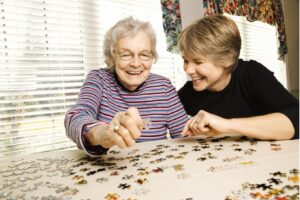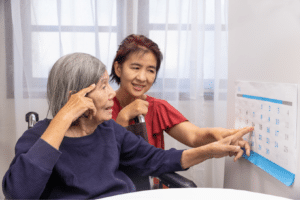The 21st century has already proven to be an exciting ride so far. Everywhere you look there are new inventions and developments that significantly change the way we live. And home care for older adults is certainly no exception. The advances being made in caregiving technology will enhance the independence and quality of life for millions of older adults and those who love them. Unfortunately, even with such groundbreaking advances, obstacles are inevitable and technology acceptance stands as perhaps the most major one. We examine the issue of technology acceptance among seniors and their caregivers, and how to address the challenges presented.
Embracing Technology or Shying Away from It?
One of the biggest care issues that technology may be able to solve is keeping older adults safe and secure in their homes—and living as independently as possible. It may also help their friends and family feel more comfortable about their loved ones remaining self-sufficient at home.
But the truth is, even the latest and greatest technology in the world won’t help anyone if it’s not accepted. This is especially problematic when those involved in home care are reluctant to embrace new ways of addressing that care. Some are more willing to explore such technology than others, but preliminary evidence shows that this willingness increases when the advances are used to provide a) better care, or b) a monetary advantage.
For those who tend to shy away from caregiving “tech,” education about both the products and their possibilities is the key in getting them to at least give the products a try. The instruction methods used must not be in a language that goes over their heads or in industry-specific jargon that mystifies most of the target demographic. And instead of just words, potential product-adopters may benefit from live demonstrations (so they can see how the items under consideration actually work). Finally, evidence-based studies can help people see why these innovations are worth learning about, investing in, and using.
But what do the older adults involved think about all this? After all, they’re the main beneficiaries of these remarkable new developments, even if professional services providers or family caregivers are the ones using them. Typically, we find that older adults are wary of new technologies. However, if presented well, the adoption of such technologies can take place.
The keys seem to be that, when presenting the products to older adults, they must a) overcome their intimidation, and b) see the value in what’s being offered. And when it comes to value, specific examples may work best. In other words, showing the older adults how the products will help them connect with others or enjoy something fun, such as music or art, may make a difference. Once they learn that special adaptations for iPads, sound systems, etc., can help achieve these goals, acceptance and utilization may occur much more rapidly.
Getting Needed Support
Another issue often found in bringing home care technology to those who need it is getting appropriate support in the relevant market. One potential way to solve this dilemma is with demonstrations and expos that shepherd and assist up-and-coming ideas. Such measures shorten the time it would take to get ideas and innovations to the people they’d benefit most.
Paying for Life-Changing Inventions
This talk of life-changing inventions is all well and good, but only if clients can actually afford them. As you probably already know, many older adults and their families already struggle to pay for home care in general. The good news is that, just as insurance companies pay for many adaptive devices now, they may cover new technologies in the future.
Where There Are Issues with Technology Acceptance, There Are Also Opportunities
There’s a saying that obstacles are just opportunities in disguise. If you’re the kind of person who sees problems as a form of inspiration, there are many exciting discoveries you’ll want to explore in homecare technology. Many of these will be highlighted and discussed at this year’s Aging 2.0’s Age Tech Expo. Come to the Hyatt Regency in San Francisco on November 19-20, 2015, and help seniors soar above obstacles like never before!
If you are unsure of how to best help an aging loved one, the trained and compassionate staff at the Institute on Aging is here to help you make that decision and gain the best in at-home care for older adults. Contact us to find out more.







